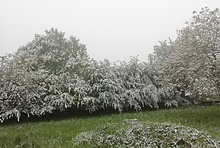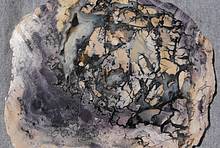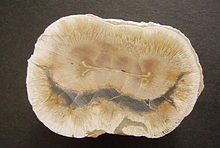Home PageAbout MindatThe Mindat ManualHistory of MindatCopyright StatusWho We AreContact UsAdvertise on Mindat
Donate to MindatCorporate SponsorshipSponsor a PageSponsored PagesMindat AdvertisersAdvertise on Mindat
Learning CenterWhat is a mineral?The most common minerals on earthInformation for EducatorsMindat ArticlesThe ElementsThe Rock H. Currier Digital LibraryGeologic Time
Minerals by PropertiesMinerals by ChemistryAdvanced Locality SearchRandom MineralRandom LocalitySearch by minIDLocalities Near MeSearch ArticlesSearch GlossaryMore Search Options
The Mindat ManualAdd a New PhotoRate PhotosLocality Edit ReportCoordinate Completion ReportAdd Glossary Item
Mining CompaniesStatisticsUsersMineral MuseumsClubs & OrganizationsMineral Shows & EventsThe Mindat DirectoryDevice SettingsThe Mineral Quiz
Photo SearchPhoto GalleriesSearch by ColorNew Photos TodayNew Photos YesterdayMembers' Photo GalleriesPast Photo of the Day GalleryPhotography
╳Discussions
💬 Home🔎 Search📅 LatestGroups
EducationOpen discussion area.Fakes & FraudsOpen discussion area.Field CollectingOpen discussion area.FossilsOpen discussion area.Gems and GemologyOpen discussion area.GeneralOpen discussion area.How to ContributeOpen discussion area.Identity HelpOpen discussion area.Improving Mindat.orgOpen discussion area.LocalitiesOpen discussion area.Lost and Stolen SpecimensOpen discussion area.MarketplaceOpen discussion area.MeteoritesOpen discussion area.Mindat ProductsOpen discussion area.Mineral ExchangesOpen discussion area.Mineral PhotographyOpen discussion area.Mineral ShowsOpen discussion area.Mineralogical ClassificationOpen discussion area.Mineralogy CourseOpen discussion area.MineralsOpen discussion area.Minerals and MuseumsOpen discussion area.PhotosOpen discussion area.Techniques for CollectorsOpen discussion area.The Rock H. Currier Digital LibraryOpen discussion area.UV MineralsOpen discussion area.Recent Images in Discussions
GeneralBabingtonite Why MA and CT

15th Jul 2012 10:24 UTCBart Cannon
I don't think there is anything special about the composition of babningtonite, nor anything special about the rocks in Connecticut or eastern Massacheusets.(too lazy to spell check)
Why is that area the center of distribution for babingtonite in North America ? Is it because mineral people are never recognizing the crummy little crystals of babingtonite in their own local collecting areas ?
Ten years ago a major environmental firm hired me to work on the mineralogy of the tailings at a mine. They wouldn't tell me where the mine was.
The principal investigator thought that if he told me where the sample came from, that it would bias my analysis. This happens often and it is completely stupid. It is a team effort and the more I know, the better my results.
In the first polished that I analyzed, I found manganbabingtonite, and I was pleased to report to him that the location was the Iron Cap mine in Arizona.
His strategy was foiled. But so was mine. I have not had a job from them since.
Bart

15th Jul 2012 13:24 UTCChester S. Lemanski, Jr.
15th Jul 2012 13:35 UTCDavid Von Bargen Manager

15th Jul 2012 14:53 UTCBart Cannon
The host rocks at Blueberry Mountain in Woburn are medium grained and loaded with K-Spar, but the other New England localities are fine grained dark stuff, I think referred to as "trap rock".
I wonder how "trap rock" wormed its way into the vernacular.
Washington State has almost every rock type ever described. Plenty of prehnite bearing basalts. I've been systematically collecting in the State since 1965, and not a trace of my magic mineral.
Bart
15th Jul 2012 16:31 UTCHarold Moritz 🌟 Expert
"The erosion of trap rock created by the stacking of successive lava flows often created a distinct stair-step landscape from which the term "trap" was derived from the Scandinavian word "trappa", which means "stair step"."
Here in Connecticut the basalt lava flows and diabase intrusions (both referred to as trap rock here) do not have that stepped characteristic, but do possess plenty of babingtonite in fractures and gas vesicles. It also occurs in fractures in metamorphic rocks, mostly in SE New England, such as at Woburn. In both modes of occurrence, the babingtonite formed late in the sequence of crystallization and probably has more to do with the depth of burial at the time than the host rock composition. Perhaps your Washington rocks were not as deeply buried?
15th Jul 2012 18:05 UTCRonnie Van Dommelen 🌟 Manager
Since your original post stated North America, I'll chime in for Canada.
Here in Nova Scotia we have one roadcut that has produced tiny black blocky crystals on prehnite. I found these several years back. They are undoubtedly babingtonite, but have not been tested yet. It (and the next specimen) are on my to-ID list. The other specimen I have is from Cape D'Or and is VERY tiny black crystals associated with gyrolite(?, also needs ID - VERY rare in NS), apophyllite and heulandite.
Babingtonite has not been reported from Nova Scotia, so it would be very interesting when these pieces are processed.
Last summer some friends of mine found some small crystals on prehnite from New Brunswick (it is now in MinDat) that I believe were IDed with Raman.
Last winter I was looking at Lazlo Horvath's list of all minerals reported from Canada (PDF List) and found babingtonite missing. In a country as big as ours Lazlo and I were both surprised that it had not been reported before.
We don't have much in the way of the zeolite associates here (in NS), except apophyllite. We don't have any datolite, only very rare gyrolite, and rare prehnite. I guess babingtonite just fits in that category too.
Ronnie

16th Jul 2012 01:28 UTCWayne Corwin

16th Jul 2012 01:58 UTCBart Cannon
I think you might be kidding, but I would agree with babingtonite as your state mineral. It's "magic" afterall.
I have a sick feeling that Washington State's official mineral is petrified wood.
My conclusion about the seemingly limited distribution of babingtonite just relates to lack of recognition and identification of little black druses..
Bart

16th Jul 2012 03:39 UTCWayne Corwin
And the first mineral listed from the Connecticut Valley Mineral Club , in the display case's
given to schools CVMC Display Case




Mindat.org is an outreach project of the Hudson Institute of Mineralogy, a 501(c)(3) not-for-profit organization.
Copyright © mindat.org and the Hudson Institute of Mineralogy 1993-2024, except where stated. Most political location boundaries are © OpenStreetMap contributors. Mindat.org relies on the contributions of thousands of members and supporters. Founded in 2000 by Jolyon Ralph.
Privacy Policy - Terms & Conditions - Contact Us / DMCA issues - Report a bug/vulnerability Current server date and time: April 23, 2024 20:25:32
Copyright © mindat.org and the Hudson Institute of Mineralogy 1993-2024, except where stated. Most political location boundaries are © OpenStreetMap contributors. Mindat.org relies on the contributions of thousands of members and supporters. Founded in 2000 by Jolyon Ralph.
Privacy Policy - Terms & Conditions - Contact Us / DMCA issues - Report a bug/vulnerability Current server date and time: April 23, 2024 20:25:32











